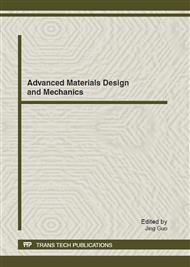p.347
p.352
p.356
p.363
p.368
p.376
p.380
p.386
p.391
Numerical Simulation Calculation of Hydroplane Direct Route Motion Based on FLUENT
Abstract:
Aiming at hydrodynamic performance prediction for hydroplane motion, numerical simulation calculation for direct route motion of a hydroplane was carried out under FLUENT software platform by using VOF method and RNG k-ε model and solving Navier-Stokes equation. Evolution of ship resistance was obtained as the velocity change, and flow field situation and dynamic pressure variation of hydroplane hull bottom were reflected intuitively. By comparing the results of FLUENT calculation and ship model experiment and theoretical estimation, analyzing, especially wake current, it was verified that numerical simulation calculation of hydroplane direct route motion and hydrodynamic performance prediction based on FLUENT are feasible and precise enough.
Info:
Periodical:
Pages:
368-375
Citation:
Online since:
September 2012
Authors:
Price:
Сopyright:
© 2012 Trans Tech Publications Ltd. All Rights Reserved
Share:
Citation:


